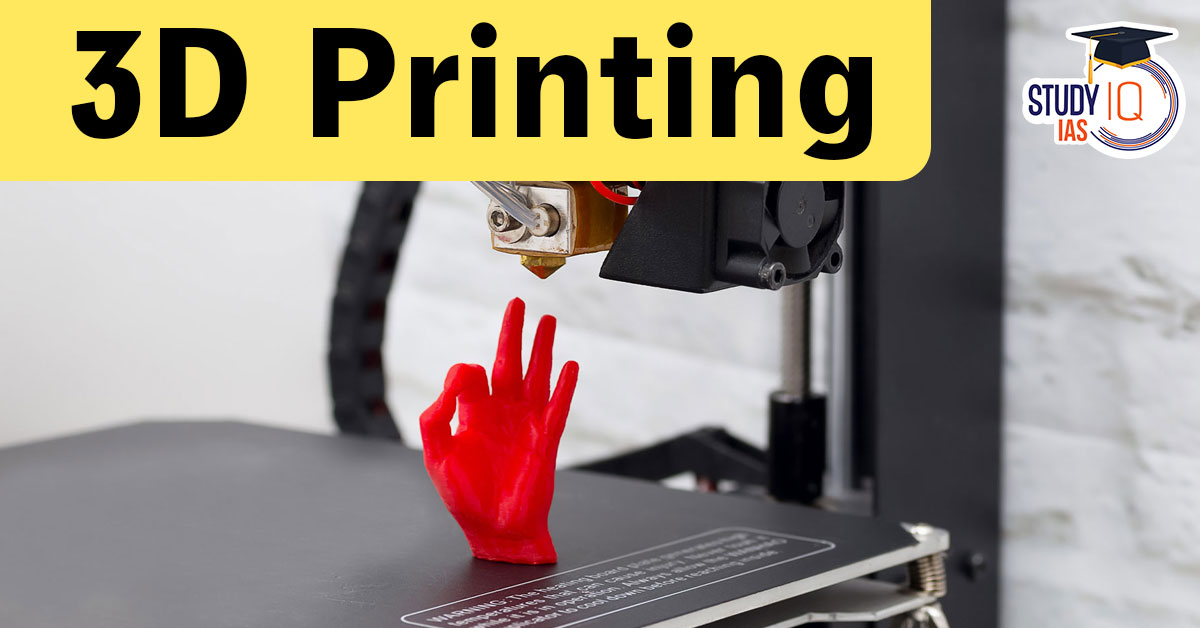Context: Recently Japan built a 3D-printed train station in six hours.
What is 3D Printing?
- 3D Printing is a process of creating three-dimensional objects from digital models by adding material layer by layer. It is also known as additive manufacturing.
- It is an additive process, in which layers of a material like plastic, composites or bio-materials are built up to construct objects that range in shape, size, rigidity and colour.
- It allows the creation of complex shapes and structures with high precision.
How 3D Printing is done?
- The basic principle of 3D printing involves building an object layer by layer.
- It starts with a digital model or a computer-aided design (CAD) file, which is sliced into thin cross-sectional layers.
- The 3D printer then reads these slices and deposits or solidifies material one layer at a time, gradually building up the final object.
- Various 3D Printing Technologies: Fused Deposition Modeling (FDM), Stereolithography (SLA), Selective Laser Sintering (SLS), Binder Jetting etc.
| UPSC PYQ |
Q. 3D printing” has applications in which of the following? (2018)
Select the correct answer using the code given below: (a) 1, 3 and 4 only (b) 2, 3 and 5 only (c) 1 and 4 only] (d) 1, 2, 3, 4 and 5 Answer: D |


 India to sign deal to buy 26 Rafale-M Fi...
India to sign deal to buy 26 Rafale-M Fi...
 Technology and Innovation Report 2025
Technology and Innovation Report 2025
 Satellite Internet, Working and Associat...
Satellite Internet, Working and Associat...





















